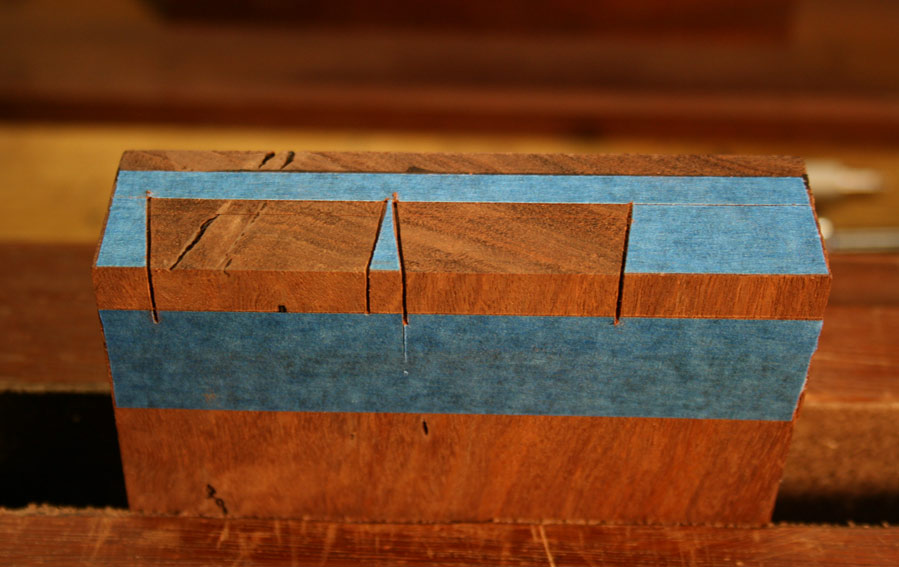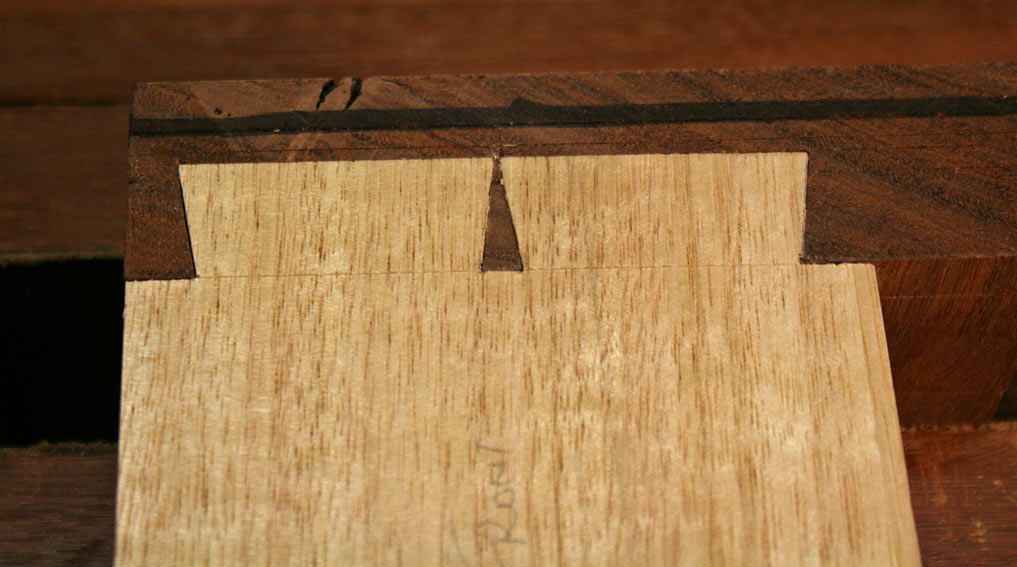Prashun, you are not sawing close enough to the line (edge of the tape) ...Fitting some pins. I can't say the results are markedly better than previous attempts, but the process is getting a little easier. Until I get more proficient at fitting 'off the saw', i find it beneficial to work in small stages and break often. It's tedious hunching over a bench (my new bench-on-bench helps with this) and it's tempting to file or chisel off too aggressively in order to force the fit. But anyone can get pretty good results with sufficient patience and delicacy. Breaking often helps maintain that delicacy.
Jim, another blasphemy alert: My favorite pin-fitting tool is a fine rasp. I notice that the more of these I do, the more I can quickly feel where the adjustments need to be made. ...
There should be no need to pare anything.
I saw a tip from Garrett Hack to use a marking knife to get that waste out too. (Derek, did he steal that too)
I think he got that from Chris Vesper ... or vice versa
Regards from Perth
Derek









 Reply With Quote
Reply With Quote




